|
FAMILY SPIRIT WALK |
On October 15th, at the end of the Family Spirit Walk For Mother Earth, many of the Walkers took further steps to protect the planet with prayer-actions in Mercury and at Yucca Mountain. For going the extra miles, Nye County officials (with the help of Wackenhut Security) tried to punish the 27 who crossed the line beyond the comfort zone of the County & DoE/NNSA folks. All who took these extra steps for peace and healing had permission of the local land stewards, the Western Shoshone National Council. Nye County took these 27 to Beatty, NV for jail and court. The Vegas ACLU got involved, as well as Attorney David Kahn. The ACLU Attorney, Allen Lichtenstein, pointed out that Nye was infringing on some of the people's constitutional (Nevada) rights,
Later, "Justice of the Peace" Bill Sullivan was not happy about the refusals to plead, and intended to take special punitive measures against these "refuseniks" (Kahn's pet name for them), but Attorney Kahn managed to talk Sullivan out of it, so everyone is going to trial for now, except those who had their charges dropped on December 4th, and of course those who already had their charges dropped in November. Those who pleaded "not guilty" had motions filed explaining that Nye County has no jurisdiction because of the treaty of Ruby Valley of 1863. The motions were argued, then denied by Sullivan. He will not allow the cases to be joined together. Both Bill Sullivan and the DA were at all times cordial and professional with Attorney David Kahn. And the excess unlawful charges were dropped in early November. All the trespassing charges remained against all 27, until the middle of November when Nye District Attorney Donn Ianuzi began dropping certain cases alltogether. By March 28th, only six defendants remained. Ianuzi offered a plea bargain that four took. Then he dropped the charges on Greg Getty. Then, only Susi was left....
|
CONTACT: Susi Snyder 917-940-5882 or Kalynda Tilges 702-369-2730 March 31, 2003 YUCCA MOUNTAIN ACTIVIST WINS FREEDOM BUT IS DENIED JUSTICE Beatty, NV__ 3pm- After more than half an hour of deliberations, Beatty Court Justice of the Peace Bill Sullivan, found Ms. Susi Snyder guilty of trespass on Yucca Mountain. Saying that he commended Ms. Snyder on her efforts to prevent harm to Nevadans by the Yucca Mountain Project (YMP), however, Sullivan said that this time she’d “stepped over the line a little too far.” Ms. Snyder was arrested for trespass with four other individuals on October 14, 2002. |
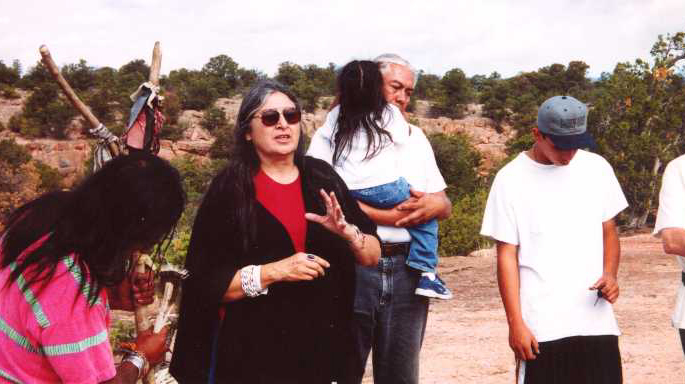

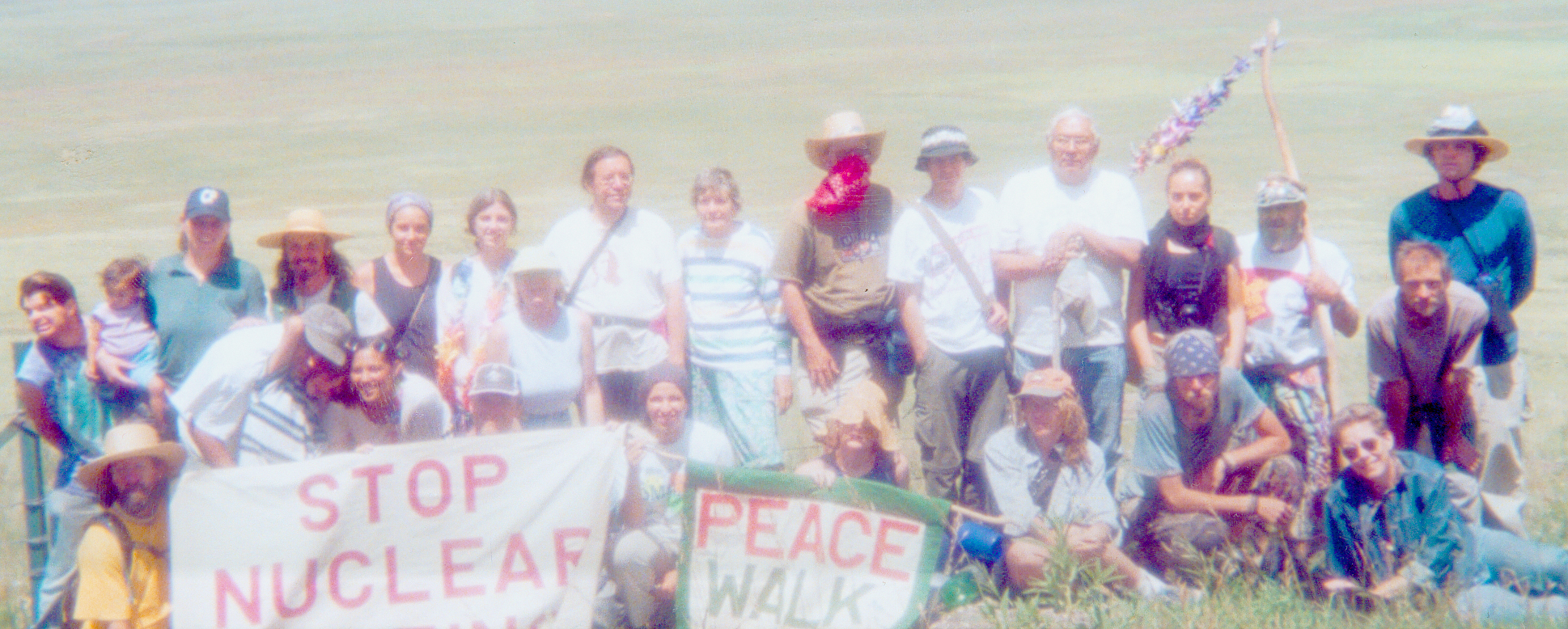
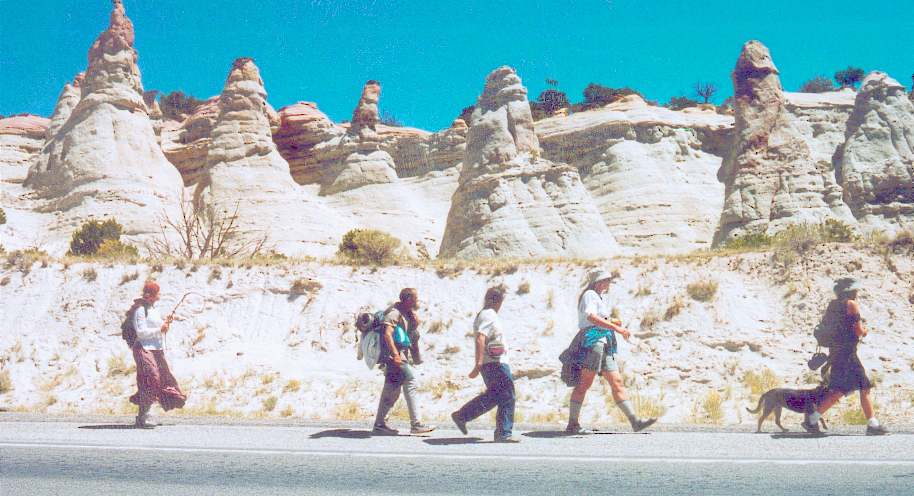
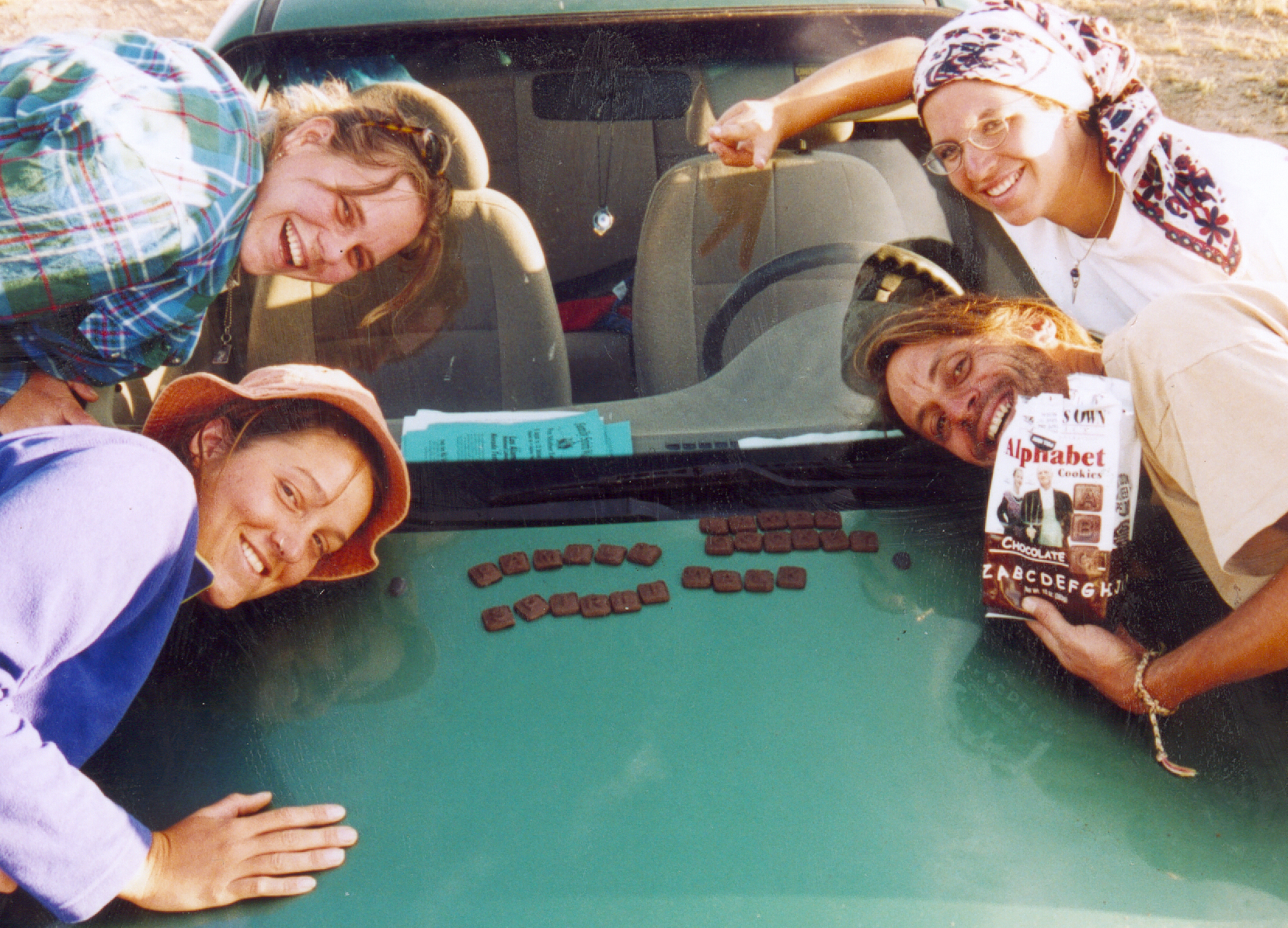
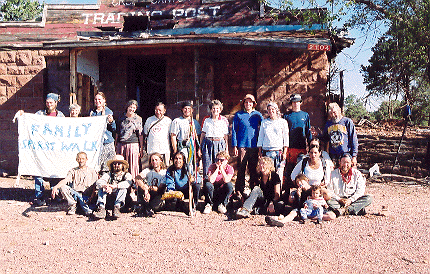
I hear the voices of the Grandmothers calling me. I hear the voices of the Grandfathers calling me.
They say: “Wake up, wake up. They say: Wake up, wake up. Listen, listen. Listen, listen:
May the rivers all run clear. May the mountains be unspoiled.
May the air be pure. May the trees stand tall.
May the Earth be loved by all; May the Earth be shared by all.”
|
The Family Spirit Walk for Mother Earth
by Jennifer Petullo |

|
|
NEWS RELEASE: 4 October 2002 CONTACT: Kalynda Tilges (800) 471 4737 Marc Page (505) 870 2275 www.angelfire.com/retro/nuclear AFTER TWO MONTHS ON THE ROAD FROM LOS ALAMOS WHO: Concerned people of the USA & other countries WHAT: A faith-based prayer walk for nuclear abolition through the Southwest which began in August in New Mexico; continuing through Southern Nevada on October 4th, and over to the Nevada Test Site by October 11th 2002. WHEN: October 4th 2002 in Las Vegas, NV WHERE: Walking westward at 7:00 AM from our campsite near the junction of Las Vegas Blvd. and Hwy 15 (exit 58) to the National Nuclear Security Administration Building at the corner of Lossee and Energy Way (formerly the DOE Building) by 3:00 PM. WHY: Bringing awareness to communities about the radiation hazards in the USA, the faith- based walkers are encouraging healing of the land and an end of the radioactive contamination and destructive nuclear science practices. Native Americans bear the brunt of these nuclear industries. Steve Lamar, from New Mexico, has been with the group since it began its journey in Los Alamos, NM says, "Humans are the custodians of planet Earth; we want to protect it for our children and children's children." Marieke Van Coppenolle, who left her two sons in Belgium to march with the group, says, "Nuclear proliferation is a global problem. US weapons of mass destruction are stored in my country." In this region, the Family Spirit Walk is focused on honoring the victims of nuclear experimentation at the Nevada Test Site. Many "downwinders" (nuclear victims) in areas surrounding the test site have carried the burden of the nuclear weapons tests, and now the same families are being asked to risk their lives again as high-level nuclear waste is slated to be transported through this area to Yucca Mountain, adjacent to the Test Site. The US Department of Energy warns the people of the US of the likelihood of hundreds of accidents with such deadly toxins once shipments begin in a few years. These would occur in random locations along the transport routes, which converge mainly in Las Vegas area residents/potential victims. ### |